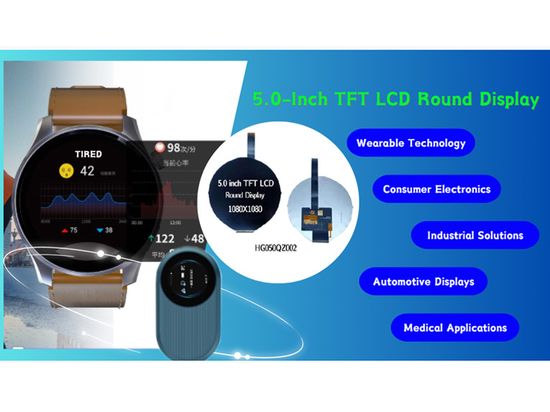
#Product Trends
OLED in Smartwatch Applications
Smartwatches have become increasingly popular over the past few years, and one of the key components that have contributed to their success is the use of OLED displays.
I. The Development of OLED in Smartwatch Applications
Smartwatches have become increasingly popular over the past few years, and one of the key components that have contributed to their success is the use of OLED displays.
OLED technology has revolutionized the way we view and interact with smartwatches.
It has been around since the 1980s, but it wasn’t until the early 2000s that it started to gain traction in the consumer electronics market. In 2004, Sony released the first OLED TV, which was followed by OLED displays in smartphones and other devices.
OLED technology has had a significant impact on the smartwatch market, many manufacturers create devices with superior image quality, energy efficiency, and design flexibility.
As the smartwatch market continues to grow, it is likely that we will see further advancements in OLED technology, leading to even more innovative and exciting smartwatch designs.
The development of OLED technology has been a major factor in the growth of the smartwatch market.
II.The Advantages of OLED in Smartwatch Applications
OLED technology offers a number of advantages over traditional LCD displays, making it an ideal choice for smartwatch applications.
Below are some of the key advantages of OLED in smartwatches:
● Superior Image Quality
It offers high contrast ratios, deep blacks, and vibrant colors, providing superior image quality compared to LCD displays.
This makes OLED displays perfect for displaying information such as notifications, messages, and fitness tracking data.
● Energy Efficiency
It can emit its own light, which means that it can display black pixels without using any power.
This is especially important for smartwatches, which have limited battery capacity.
● Faster Response Time
It has faster response times than LCD displays, making them better suited for displaying fast-moving content such as animations and videos.
● Greater Design Flexibility
It can be made to be curved or flexible, allowing manufacturers to create unique and innovative designs for their smartwatches.
● Thin and Lightweight
It is thin and lightweight, making them ideal for use in wearable devices such as smartwatches. They also offer greater durability and resistance to damage compared to LCD displays.
● Improved Battery Life
Because OLED displays are energy efficient, they can help to improve the battery life of smartwatches.
This is especially important given that smartwatches have limited battery capacity and are often used throughout the day.
III. Conclusion
Overall, OLED technology offers a range of advantages for smartwatch applications, including superior image quality, energy efficiency, faster response times, greater design flexibility, thin and lightweight construction, and improved battery life.
As the smartwatch market continues to grow, it is likely that we will see further advancements in OLED technology, leading to even more innovative and exciting smartwatch designs.
Related: 3.0-inch OLED Display for a Smartwatch






